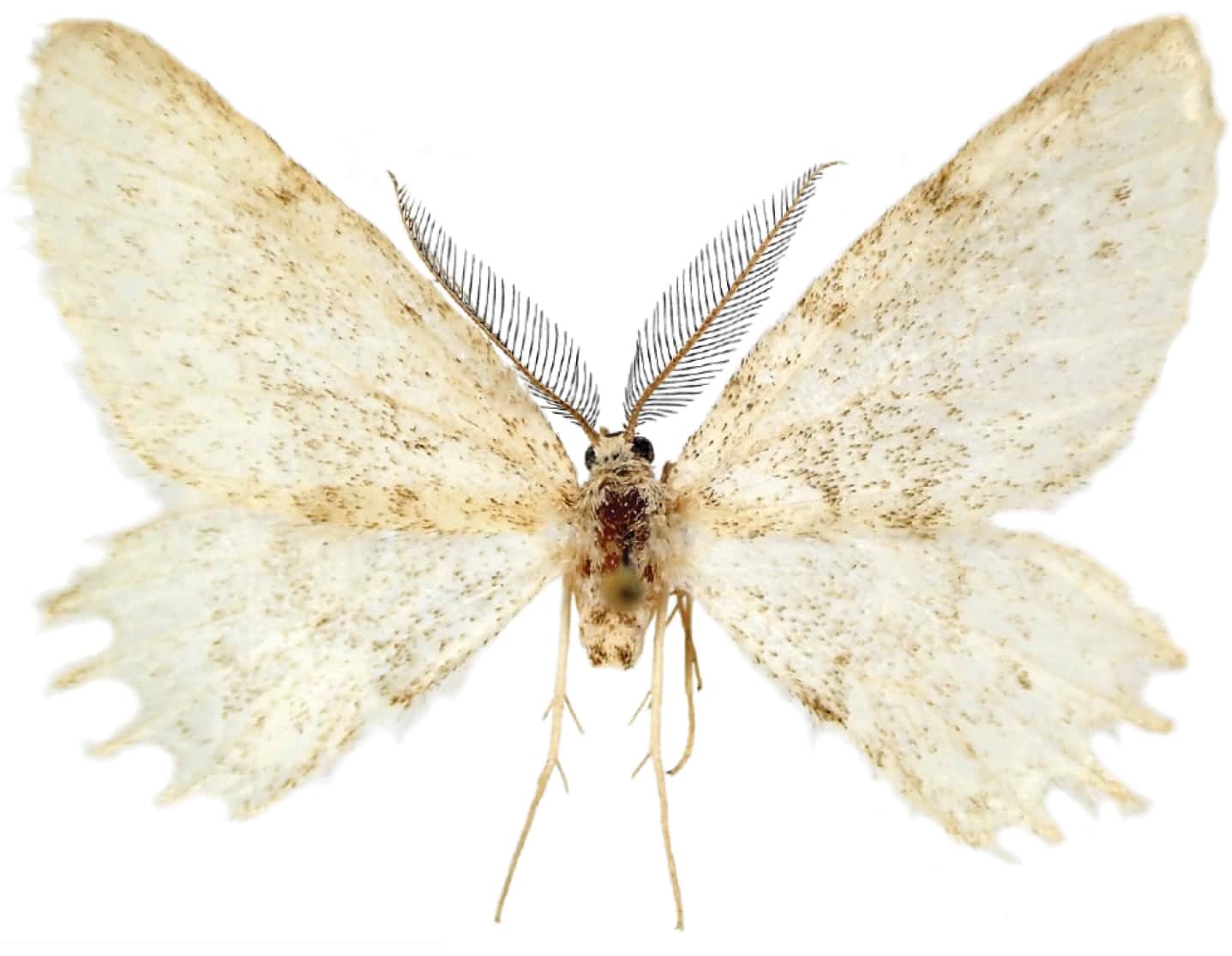Butterflies and moths in Europe (European Lepidoptera) are considered to be well-researched, with thousands of species already identified. However, a new genus of moths tells a different story. The moth, named Mirlatia arcuata, belongs to the Geometrid family and was recently identified by a team of European researchers.

It all started in the 1980s, when Robert Hentscholek, an amateur entomologist from Austria, collected three specimens of a moth species in Croatia, which were added to his collection without being identified. Decades later, the collection was sold to Tony Mayr, another researcher from Austria, who noticed this strange insect that stood out from all the others.
Mayr contacted Hentscholek for more information and found that a male and female specimen of the same species had been given to another collector who had passed away. In 2015, the female specimen was rediscovered in the National History Museum in Vienna, while the male was given by Mayr to the Tyrolean Federal State Museums.
Finally, in 2022, a group of researchers started working together to identify this moth, which has now been described as a new genus and species. It was given the name Mirlatia arcuata, with Mirlatia being an aggregate of the stems of two Latin words that translate to “being a surprise”.
Unlocking the mystery
Finding such a large and distinctive moth in a well-explored region like southern Croatia might seem unlikely. However, not much research has been done in that area during the moth’s flight season in March, Peter Huemer, study author, said in a news release. “It’s possible that Mirlatia arcuata is a cold-adapted, winter-active species,” he added.
The researchers discarded the possibility of Mirlatia being introduced from other continents. After looking at all known moths from cold regions in the northern and southern hemispheres, they couldn’t find a similar species. Also, the collection location of the moth isn’t close to a port, and during the Yugoslavian era, the traffic on Croatia’s coast was limited.
“It may seem peculiar that such a remarkable species has remained undiscovered for so long. However, Dalmatia has not been a highly popular research area for lepidopterists, especially early in the year, in March,” the researchers wrote, noting that there have been other recent species discoveries in the Balkan Peninsula.
Still, the relationship of the new genus to others hasn’t been fully clarified. Even the assignment of the moth to the subfamily Larentiinae isn’t entirely certain and is based on limited features such as wing venation. Initial genetic data suggest a largely independent systematic position of the species but further studies will be necessary.
Even less information is available regarding the biology of the moth, except for its habitat being identified as coastal rock biomes with Mediterranean vegetation. In March 2022, Stane Gomboc, an lepidopterologist, went searching for the species but unfortunately came back empty-handed. There’s speculation that the moth’s flight season could have ended due to climate change.
The researchers hope that they will soon rediscover Mirlatia arcuata and learn more about its habitat requirements and biology. Research on a new species is crucial for understanding biodiversity and can contribute valuable information to conservation efforts, especially when dealing with potential impacts from factors such as climate change.
The study was published in the journal ZooKeys






